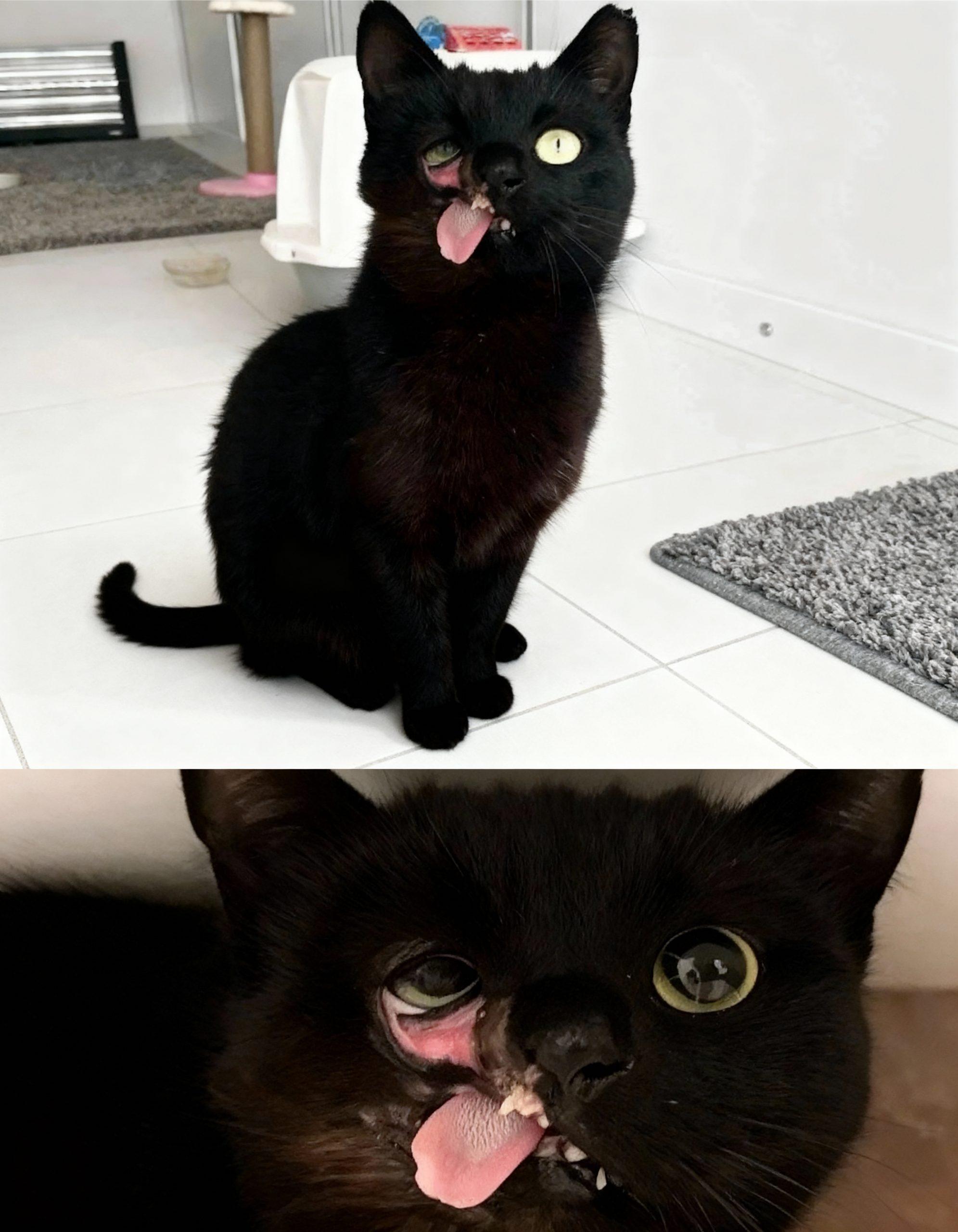In the quiet suburbs of a small Midwestern town, a black cat named Raven once roamed freely, her sleek coat catching the sunlight as neighbors left bowls of kibble and gentle words at their doorsteps. She was a community fixture—skittish but familiar, a shadow that darted between fences and flowerbeds, accepted yet untouchable. That fragile peace shattered on a rainy October night in 2023 when a senseless act of cruelty left her face mangled, one eye swollen shut, her jaw fractured, and her tongue lolling helplessly from a gaping wound. What followed was not just a story of survival, but a jaw-dropping transformation that no one—least of all the woman who saved her—could have predicted.

The attack was brutal and unexplained. A local teenager, later identified through security footage, had swung a metal pole at Raven in a fit of anger after she hissed at his dog. The blow crushed the left side of her face, splintering bone and tearing tissue. Veterinarians who examined her the next morning gave a grim prognosis: the eye was unsalvageable, the jaw misaligned, and infection was already setting in. “She’ll never eat normally again,” one vet warned. “And trust? Forget it. She’s feral now—traumatized beyond repair.” Raven vanished into the woods for three days, blood crusting her fur, her meows reduced to pained whimpers.
That’s when Shelly Morrison, a 34-year-old librarian with no prior rescue experience, stepped in. She had fed Raven for years from a distance, always respecting the cat’s boundaries. Now, she refused to let her die alone. Armed with tuna and patience, Shelly began leaving food 20 feet away, then 15, then 10. For weeks, Raven watched with her one good eye, trembling but hungry. The first breakthrough came on a frigid November morning: Raven ate while Shelly sat motionless on the porch, 12 feet away. The second? Raven let Shelly touch her tail—just the tip—without bolting.
The surprises kept coming. Inside Shelly’s guest room, Raven didn’t hide under furniture as expected. Instead, she claimed a sunlit windowsill, watching birds with a focus that defied her injuries. When the vet removed her ruined eye and rebuilt her jaw with wire and patience, Raven didn’t fight the cone of shame—she wore it like armor. Three months later, the wires came out, and Raven did something no one thought possible: she purred. Not a weak rumble, but a deep, vibrating song that filled the room when Shelly scratched under her chin.
But the real shock came at the adoption event. Dozens of cats meowed and pawed at cages, yet Raven—now missing an eye, with a slightly crooked smile and a tongue that still peeked out—stole the show. A retired couple, drawn to her calm demeanor, asked to meet her. Raven didn’t cower. She walked straight to the wife, head-butted her hand, and flopped over for belly rubs. “She chose us,” the husband later said, tears in his eyes.
Today, Raven lives in a sun-drenched home with a heated catio and two humans who call her “Captain.” Her tongue still sticks out when she’s happy (a permanent reminder of her past), but her face—no longer swollen or scarred—radiates contentment. Shelly visits monthly, and Raven greets her with the same purr that once seemed impossible.

Raven’s journey proves that healing isn’t linear, and trust isn’t earned overnight. It’s built in stolen moments: a can of tuna, a gentle hand, a sunbeam on a windowsill. Her story isn’t just about survival—it’s about the staggering power of compassion to rewrite even the cruelest endings.






